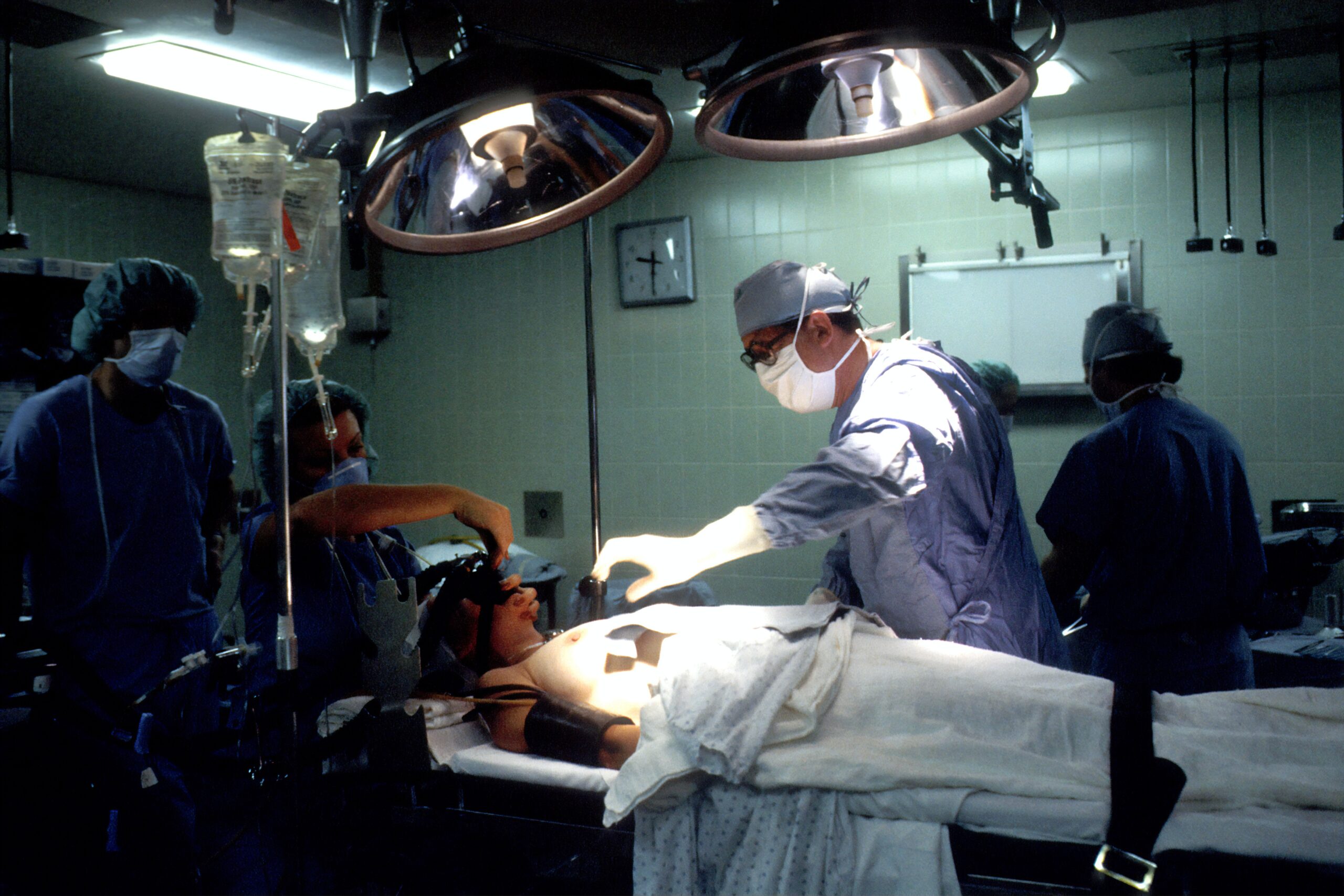If you’re a plastic surgeon looking to enhance your online presence and attract more patients, then mastering the art of Search Engine Optimization (SEO) is essential. With the ever-increasing competition in the medical industry, it’s crucial to ensure that your website ranks high on search engine results pages. In this article, we will unveil the top SEO strategies specifically tailored for plastic surgeons, giving you the tools and knowledge you need to effectively optimize your online presence and reach your target audience. From keyword research to website optimization, we’ve got you covered with the latest and most effective techniques to boost your visibility and attract potential patients. So, let’s dive into the world of SEO for plastic surgeons and take your online presence to new heights.

1. On-Page Optimization
On-page optimization is a crucial aspect of SEO that focuses on optimizing various elements on your website to improve its visibility in search engine results. By implementing effective on-page optimization techniques, you can enhance your website’s relevance, user experience, and overall search engine rankings.
1.1 Title Tags
Title tags are HTML elements that define the title of a webpage. They play a significant role in on-page optimization as they provide search engines with important information about the content of a page. It is essential to create unique and descriptive title tags that accurately represent the page’s content and include relevant keywords. By optimizing your title tags, you can improve your website’s visibility in search engine results and attract more organic traffic.
1.2 Meta Descriptions
Meta descriptions are snippets of text that provide a brief summary of a webpage’s content. Although they do not directly impact search engine rankings, well-crafted meta descriptions can significantly influence click-through rates from search results. It is important to create concise and compelling meta descriptions that accurately reflect the content of the page and entice users to click on your website.
1.3 Headings
Headings, represented by HTML tags (H1, H2, H3, etc.), are used to structure the content of a webpage. They not only help users navigate through your content but also provide search engines with information about the hierarchical structure and organization of your page. By utilizing relevant keywords and structuring your headings properly, you can enhance the readability and SEO-friendliness of your website.
1.4 URL Structure
Having a well-structured URL can improve both user experience and search engine optimization. A clean and descriptive URL that includes relevant keywords can help users understand what the page is about before even clicking on it. Additionally, search engines also use the URL as a ranking factor, so optimizing your URL structure can positively impact your website’s visibility in search results.
1.5 Keyword Optimization
Keyword optimization is the process of strategically incorporating relevant keywords into your website’s content to improve its visibility in search engine results. By conducting comprehensive keyword research and incorporating targeted keywords naturally throughout your content, you can increase your website’s chances of ranking higher for relevant searches.
1.6 Quality Content
Creating high-quality, informative, and engaging content is crucial for on-page optimization. Search engines prioritize websites that offer valuable content to users, so it’s essential to focus on producing content that is relevant, well-researched, and unique. By consistently publishing quality content that caters to your target audience’s needs, you can establish your website as an authoritative source in your industry and improve your search engine rankings.
2. Local SEO
For plastic surgeons targeting a specific geographic area, implementing local SEO strategies is essential to ensure that your website is visible to potential patients in your locality.
2.1 Google My Business
Setting up and optimizing your Google My Business (GMB) listing is a crucial step in local SEO. By claiming and verifying your GMB listing, you can provide pertinent information about your plastic surgery practice, such as your address, phone number, website, and business hours. Optimizing your GMB listing with accurate and up-to-date information can improve your chances of appearing in local search results and attract local patients.
2.2 Online Directories
List your plastic surgery practice on reputable online directories and review platforms, such as Yelp, Healthgrades, and RealSelf. Not only do these directories provide valuable information to potential patients, but they also contribute to your website’s local SEO efforts. Ensuring that your practice’s information is consistent across various directories can improve your online visibility and credibility.
2.3 Local Keywords
Incorporating local keywords into your website’s content can help you target potential patients in your area. Research and identify relevant local keywords that reflect the services you offer and the locations you serve. By strategically integrating these keywords into your content, meta tags, and headings, you can increase your website’s visibility for local searches.
2.4 Location Pages
Creating location-specific pages on your website can help you further optimize it for local search. These pages should provide detailed information about the specific areas you serve, including relevant keywords, testimonials from local patients, and any unique attributes of each location. By creating informative and engaging location pages, you can improve your website’s local SEO performance.
2.5 Reviews and Ratings
Positive reviews and ratings from satisfied patients can significantly impact your local SEO efforts. Encourage your patients to leave reviews on platforms like Google, Yelp, and RealSelf, as well as your own website. These reviews not only enhance your online reputation but also contribute to your website’s visibility in local search results.
2.6 NAP Consistency
NAP stands for Name, Address, and Phone number. Ensuring NAP consistency across your website, online directories, and other online platforms is crucial for local SEO. Inconsistent or outdated NAP information can confuse search engines and potential patients, negatively impacting your website’s local search rankings. Regularly audit and update your NAP information to maintain consistency and improve your local SEO efforts.
3. Mobile Optimization
With the increasing number of people using mobile devices to browse the internet, optimizing your website for mobile is vital to reach a wider audience and enhance user experience.
3.1 Responsive Design
Implementing a responsive design ensures that your website adapts to different screen sizes and devices. This allows users to access and navigate your website seamlessly, regardless of whether they are using a desktop computer, tablet, or mobile phone.
3.2 Mobile-Friendly Content
In addition to having a responsive design, it is crucial to provide mobile-friendly content. Consider the mobile user’s context and prioritize clear and concise information that is easy to read and interact with on smaller screens. Avoid large blocks of text, use legible fonts, and ensure that buttons and links are easily clickable.
3.3 Page Load Speed
Mobile users have less patience for slow-loading websites, so optimizing your website’s page load speed is essential. Compress images, minimize code, and leverage caching techniques to reduce loading times for mobile users. A faster website not only enhances user experience but also contributes to improved search engine rankings.
3.4 Voice Search Optimization
With the rise of voice assistants like Siri and Google Assistant, optimizing your website for voice search is becoming increasingly important. Voice searches tend to be more conversational and longer than text-based searches, so focus on creating natural-sounding content that answers common questions related to your plastic surgery services.
3.5 AMP Implementation
Accelerated Mobile Pages (AMP) is a framework that enables faster loading speeds for mobile webpages. By implementing AMP on your website, you can provide a lightning-fast browsing experience for mobile users. AMP is particularly useful for content-heavy pages, such as blog posts or informative articles.
4. Backlink Building
Building high-quality backlinks is an essential off-page SEO strategy that can significantly impact your website’s authority, visibility, and organic rankings.
4.1 Guest Blogging
Guest blogging involves writing and publishing articles on other websites in your industry. By contributing valuable content to reputable websites, you can earn backlinks to your own website, establishing your authority and improving your backlink profile. Focus on guest blogging opportunities with websites that have high domain authority and relevance to the plastic surgery field.
4.2 Influencer Outreach
Collaborating with influencers in the plastic surgery and healthcare industry can help you build valuable backlinks. Engage with influential individuals through social media, offer to write guest posts or contribute expert advice, and leverage their platforms to reach a broader audience. Influencer collaborations can not only boost your backlink profile but also enhance your online reputation and visibility.
4.3 Natural Link Building
Natural link building happens when other websites organically link to your content because they find it valuable and relevant. Focus on creating high-quality, shareable content that naturally attracts backlinks. This can include informative articles, visual content, or unique research findings within the plastic surgery field.
4.4 Social Media Promotion
Leverage your social media platforms to promote your content and attract backlinks. Share your articles, videos, infographics, and other valuable content across your social media channels to generate engagement and encourage others to link back to your website. Engage with your audience, respond to comments and queries, and build relationships that can lead to valuable backlink opportunities.
4.5 Building Relationships
Building relationships with other website owners, bloggers, industry professionals, and influencers is crucial for successful backlink building. Engage with relevant communities and participate in discussions, conferences, and events within the plastic surgery industry. By establishing genuine connections and providing value to others, you can increase the likelihood of earning backlinks from authoritative websites.
4.6 Broken Link Building
Broken link building involves finding broken links on other websites and reaching out to the website owner to suggest replacing the broken link with a link to your relevant and valuable content. Conduct thorough research to identify websites that have broken links within the plastic surgery field. Craft personalized outreach messages that highlight the broken link and propose a relevant replacement link from your own website.

5. Technical SEO
Technical SEO focuses on optimizing your website’s infrastructure and technical elements to improve its visibility, crawling, and indexing by search engines.
5.1 Website Crawling
Ensuring that search engine bots can crawl and index your website is essential. Evaluate your website’s crawlability by submitting your sitemap to search engines, resolving any crawl errors, and utilizing tools like Google Search Console to monitor the indexing status of your website’s pages.
5.2 XML Sitemap
An XML sitemap is a file that lists all the available pages on your website, helping search engine bots understand its structure. Create an XML sitemap and submit it to search engines to facilitate the crawling and indexing of your webpages. Regularly update your sitemap as you add or remove pages from your website.
5.3 Robots.txt
The robots.txt file tells search engine bots which pages or directories of your website should not be crawled or indexed. Use the robots.txt file to restrict access to irrelevant or duplicate pages, private directories, or any content that should not be visible in search engine results.
5.4 Canonical URLs
Canonical URLs help prevent duplicate content issues by specifying the preferred version of a webpage when multiple versions with similar content exist. Implement canonical tags to ensure that search engines understand which version of a page to prioritize and index, maximizing the visibility and relevance of your content.
5.5 Structured Data Markup
Structured data markup allows you to provide additional information about your website’s content to search engines. By implementing schema markup, you can enhance the presentation of your website’s snippets in search engine results, potentially increasing click-through rates and improving your website’s visibility.
5.6 Page Speed Optimization
Page speed is a crucial ranking factor that directly impacts user experience. Optimize your website’s page speed by compressing images, minifying code, leveraging browser caching, and adopting a content delivery network (CDN). A fast-loading website not only improves user satisfaction but also contributes to higher search engine rankings.
6. User Experience
Providing a positive user experience is key to attracting and retaining visitors on your plastic surgery website. A well-designed and user-friendly website can enhance engagement, increase conversions, and improve search engine rankings.
6.1 Clear Navigation
Create a clear and intuitive navigation system that allows users to easily navigate through your website. Use logical categories and subcategories to organize your content, making it effortless for visitors to find the information they are looking for. Including a search bar can also facilitate navigation and improve the user experience.
6.2 Mobile-Friendly Design
As discussed earlier, optimizing your website for mobile devices is crucial in today’s digital landscape. Ensure that your website’s design is responsive and adapts seamlessly to different screen sizes. Prioritize mobile users by using legible fonts, clear call-to-action buttons, and streamlined layouts.
6.3 Fast Website Load Time
In an era of instant gratification, users expect websites to load quickly. Optimize your website’s performance to ensure fast loading times by compressing images, minifying code, and leveraging browser caching. A website that loads quickly not only improves user experience but also reduces bounce rates, contributing to higher search engine rankings.
6.4 Engaging and Relevant Content
Create engaging and relevant content that addresses the needs and concerns of your target audience. Use a mix of informative articles, visuals, videos, and interactive elements to provide valuable information and encourage visitors to stay longer on your website. Engaging content not only enhances the user experience but also increases the likelihood of social shares and backlinks.
6.5 Easy Contact Information Access
Make it effortless for potential patients to contact your plastic surgery practice by prominently displaying your contact information throughout your website. Include a dedicated contact page with a contact form, phone number, email address, and links to your social media profiles. Easy access to contact information improves user experience and encourages visitors to reach out to you.
6.6 Intuitive User Interface
Design an intuitive user interface that guides users through your website smoothly. Use descriptive labels, intuitive button placements, and clear instructions to help users navigate through different pages, complete forms, or access additional information. An intuitive user interface improves user satisfaction and encourages visitors to take desired actions on your website.

7. Content Marketing
Content marketing involves creating and distributing valuable content to attract, engage, and retain a target audience. Implementing a comprehensive content marketing strategy can enhance your online visibility, establish your expertise, and drive organic traffic to your plastic surgery website.
7.1 Blogging
Maintain an active blog on your website to regularly publish informative and engaging articles related to plastic surgery. Write about topics that your target audience is interested in, such as different types of procedures, recovery tips, or frequently asked questions. Blogging not only provides valuable information but also helps improve your website’s search engine rankings by targeting relevant keywords.
7.2 Video Marketing
Create and share videos that showcase your plastic surgery services, highlight patient testimonials, or provide educational content. Video marketing can engage visitors and convey information more effectively than text alone. Upload your videos on platforms like YouTube and embed them on your website for increased visibility and user engagement.
7.3 Infographics
Infographics are visually appealing and information-rich graphics that present complex information in a clear and concise manner. Create visually appealing infographics that convey plastic surgery-related statistics, step-by-step procedures, or before-and-after comparisons. Infographics are highly shareable, making them an effective way to attract backlinks and social media engagement.
7.4 Social Media Content
Leverage social media platforms to distribute and promote your content. Share links to your blog articles, videos, infographics, and other valuable content on platforms like Facebook, Instagram, Twitter, and LinkedIn. Create engaging and shareable social media posts that drive traffic back to your website and encourage audience interaction.
7.5 Case Studies
Case studies are powerful tools to showcase your expertise and the success stories of your patients. Publish detailed case studies that highlight specific plastic surgery procedures, patient transformations, and the outcomes achieved. Include before and after photos, patient testimonials, and details about the techniques used. Case studies help build trust and credibility, attracting potential patients.
7.6 Ebooks and Whitepapers
Create comprehensive ebooks and whitepapers that provide in-depth information about specific plastic surgery topics. Offer these resources as free downloads on your website in exchange for visitor contact information. Ebooks and whitepapers not only attract potential patients but also position you as an authoritative source in the plastic surgery field.
8. Video Optimization
Optimizing your videos can significantly improve their visibility in search engine results and attract a larger audience to your plastic surgery content.
8.1 Keyword-Focused Titles
Craft keyword-focused titles for your videos that accurately describe their content. Research relevant keywords related to the specific plastic surgery topic covered in the video and incorporate them naturally into the title. Keyword-optimized titles help search engines understand the video’s subject matter and improve its visibility in search results.
8.2 Description Optimization
Write detailed and informative descriptions for your videos that provide additional context and relevant keywords. Include a concise summary of the video’s content, a statement of its purpose, and any notable details that viewers should know. Optimizing your video descriptions with relevant keywords improves their search engine rankings and helps users understand what the video is about.
8.3 Thumbnail Selection
Choose visually appealing thumbnails for your videos that accurately represent their content and entice viewers to click and watch. Thumbnails act as the first impression of your video and can significantly impact its click-through rate. Select visually striking images that clearly showcase the video’s subject matter and pique the viewer’s interest.
8.4 Transcriptions and Captions
Providing transcriptions and captions for your videos improves accessibility and enhances user experience. Transcriptions make your video content accessible to individuals with hearing impairments, while captions provide helpful text overlays for viewers to follow along. Including transcriptions and captions also gives search engines additional text to index, improving the video’s visibility in search results.
8.5 Video Schema Markup
Implement video schema markup on your website to provide search engines with structured data about your videos. Schema markup helps search engines understand the video’s duration, thumbnail, description, upload date, and other relevant details. By properly implementing video schema markup, you can enhance the appearance of your video snippets in search engine results and increase their click-through rates.
8.6 Hosting and Embedding
Consider hosting your videos on platforms like YouTube or Vimeo for improved visibility and reach. These platforms have extensive user bases and provide built-in features for video optimization and promotion. Additionally, embed your videos on relevant pages of your website to attract visitors and keep them engaged with your content.

9. Social Media Presence
Maintaining an active and engaging social media presence is crucial for promoting your plastic surgery practice and reaching a wider audience.
9.1 Platform Selection
Identify the social media platforms that are most relevant to your target audience and focus your efforts on those platforms. Platforms like Facebook, Instagram, Twitter, and LinkedIn can provide valuable opportunities to engage with potential patients and establish your expertise in the plastic surgery field.
9.2 Consistent Branding
Ensure consistent branding across all your social media profiles to build recognition and trust. Use consistent logos, profile pictures, color schemes, and tone of voice across platforms. Consistent branding helps establish your brand identity and makes it easier for users to recognize and engage with your content.
9.3 Content Sharing
Share your website’s content, including blog articles, videos, infographics, and case studies, on your social media channels. Craft compelling captions or descriptions for your content and encourage audience interaction and sharing. By consistently sharing valuable content, you can attract engagement, increase your visibility, and drive traffic back to your website.
9.4 Engagement and Interaction
Engage with your social media followers by responding to comments, answering questions, and initiating conversations. Actively participate in relevant groups and communities, offer expert advice, and share valuable insights. Building relationships and providing value to your audience through social media interactions can help establish your expertise and attract potential patients.
9.5 Influencer Collaborations
Collaborating with influencers in the plastic surgery and healthcare industry can expand your reach and engage with new audiences. Identify influencers who align with your brand values and target audience, and explore collaboration opportunities such as guest blogging, joint social media campaigns, or hosting live events. Influencer collaborations can significantly enhance your social media presence and attract new followers.
9.6 Performance Tracking
Regularly monitor and analyze the performance of your social media efforts using tools like Facebook Insights, Instagram Insights, or social media management platforms. Track key metrics such as follower growth, engagement rate, reach, and click-through rates. By analyzing these metrics, you can identify what works well and make data-driven decisions to optimize your social media presence.
10. Analytics and Monitoring
Implementing analytics and monitoring tools allows you to gain valuable insights into the performance of your website, track conversions, monitor search engine visibility, and make informed decisions to optimize your digital marketing efforts.
10.1 Google Analytics
Set up Google Analytics to track and analyze essential metrics such as website traffic, user behavior, bounce rates, and session durations. Assess user demographics, traffic sources, and conversion rates to gain insights into your website’s performance and make data-driven decisions.
10.2 Conversion Tracking
Utilize conversion tracking to measure the success of specific actions on your website, such as form submissions, appointment bookings, or phone inquiries. Set up conversion goals within Google Analytics or other analytics platforms to track and analyze the effectiveness of your digital marketing campaigns.
10.3 Search Console
Google Search Console provides valuable insights about your website’s search engine visibility, indexation status, and potential issues. Monitor your website’s performance in search results, identify crawl errors, analyze search queries, and submit sitemaps for indexing. Search Console allows you to monitor and optimize your website’s performance in Google search.
10.4 Website Auditing
Regularly conduct website audits to identify and rectify technical issues, content gaps, and SEO opportunities. Use online auditing tools or seek professional help to analyze aspects such as page load speed, broken links, duplicate content, and metadata optimization. Regular website audits help ensure that your website is optimized for search engines and user experience.
10.5 Competitor Analysis
Analyze your competitors’ websites and digital marketing strategies to gain insights and identify opportunities for improvement. Study their website structure, content, backlink profile, and social media presence. By understanding what your competitors are doing well and identifying areas where you can outperform them, you can refine your own strategies and stay ahead in the competitive plastic surgery industry.
10.6 Performance Evaluation
Regularly evaluate the performance of your SEO efforts and digital marketing strategies to ensure they align with your goals and objectives. Assess the impact of your SEO campaigns, content marketing efforts, backlink building, and social media presence. Analyze metrics such as organic search traffic, keyword rankings, conversion rates, and online visibility to measure your success and make necessary adjustments to your strategies.
In conclusion, implementing a comprehensive SEO strategy for your plastic surgery practice is vital to enhance your online visibility, attract the right audience, and increase your patient base. By focusing on on-page optimization, local SEO, mobile optimization, backlink building, technical SEO, user experience, content marketing, video optimization, social media presence, and analytics, you can improve your website’s search engine rankings, establish your expertise, and drive organic traffic to your website. Stay up-to-date with the latest SEO trends and algorithms to ensure continued success in the highly competitive field of plastic surgery.

